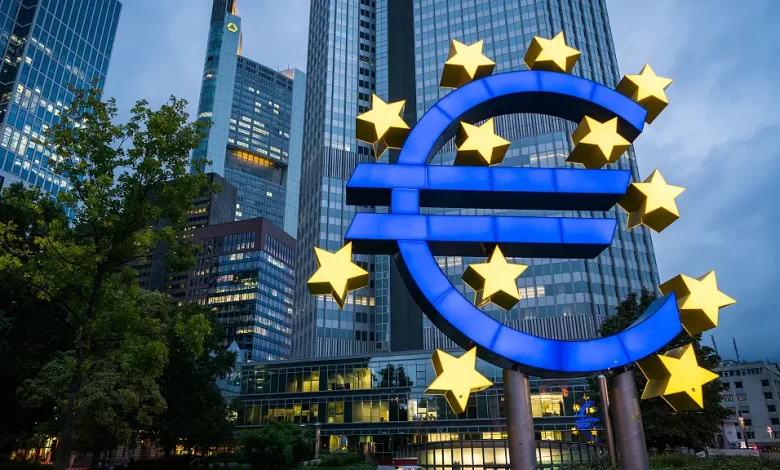
Inflation paused in the Eurozone in April, becoming stable for the first time in 2023. Even though it came out of a small recession at the end of last year, the economy eked out just a 0.1% gain in the first quarter. The CPI rose 2.4% year over year, in line with the annual inflation rate in March.
Based on the most recent data from the European Central Bank (ECB) and market forecasts, this stability might be part of a bigger tendency.
ECB Rate Cut to Ease Eurozone Economic Strains
Lowering rates by the European Central Bank will become effective on June 6. With several rounds of severe interest rate hikes to tame the inflation, inflation seems to be stabilized. The costs of energy have grown because of Middle East tensions, but an inflation indicator that excludes these components shows a favorable decline, which may comfort policymakers. This key inflation index should decelerate to 2.6% in April, more in line with the ECB’s 2% target.
The ECB and President Christine Lagarde see that the economy’s fragility and “bumps on the road” will influence inflation rates. This makes the imminent rate cut of importance in easing Eurozone economic strains. In spite of the oil price worries, disinflation is taking place as planned.
Mixed Economic Signs Suggest Cautious Optimism
Eurozone regions show varied economic signs. Inflation in Germany and Spain seems to be on the rise, whereas in France and Italy it is falling. The mixed picture is a reflection of the bloc’s sluggish recovery, with Tuesday’s GDP statistics likely to reveal regional disparities.
Statistics of the Irish economy that are due to be released on Monday can provide early insight since the country serves as a hub for U.S. multinationals. These factors usually aggravate the economic volatility in Ireland, and this could rock the Eurozone.
The extent to which consumer price inflation is in line with the ECB’s target of 2% will also influence future monetary policy. The CPI to be announced at 11 a.m. CET on Tuesday is being looked forward to in order to verify if the CPI is stabilizing as forecasted.
Bloomberg Economics forecasts that even though energy prices may keep headline inflation stable in April, core inflation, which eliminates them, could fall sharply. This trend points to a rate cut in June, as the price surge subsides to under 2% by the summer.
Services pushed Eurozone inflation in March, contributing 1.76 percentage points. Afterwards, food, alcoholic drinks, and tobacco followed. On the contrary, charging less for energy helped to lower inflation.
Then, Goldman Sachs and Morningstar predict that core inflation will keep falling because of lower service price expectations and lower near-term price pressures.
This trend implies that the focus is on inflation targets in the absence of reinforcement from external price shocks such as recent oil price surges that the ECB is closely watching.
Keep in mind that as these economic indicators keep varying, the overall narrative is one of cautious optimism, aware of the Eurozone’s economic challenges.
You can freely share your thoughts and comments about the topic in the comment section. Additionally, please don’t forget to follow us on our Telegram, YouTube and Twitter channels for the latest news and updates instantly.